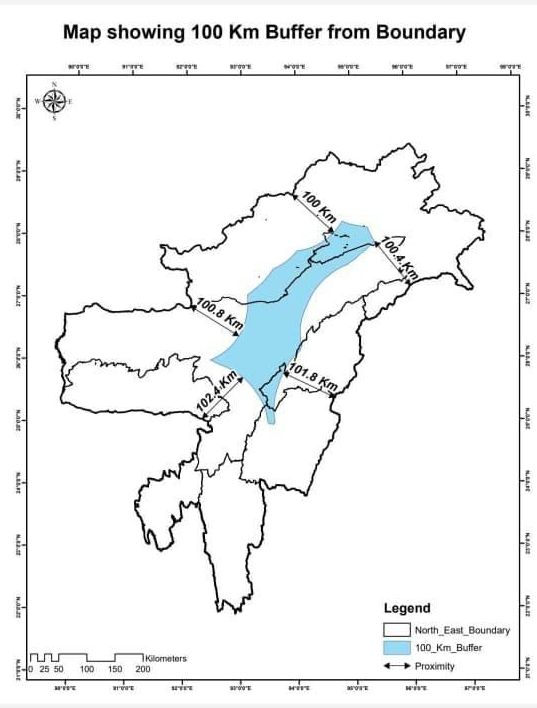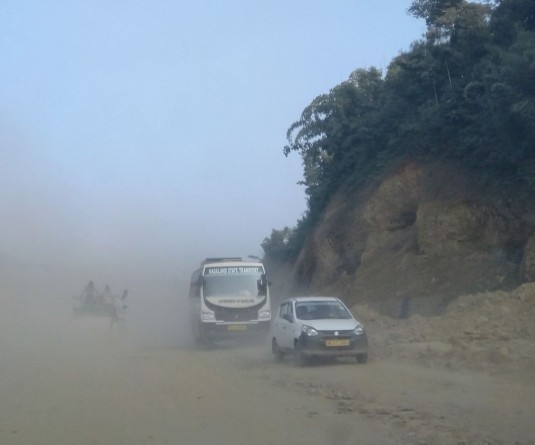The Forest (Conservation) Amendment Bill, 2023 has given rise to serious concerns on the effects it will have in the North East. (Morung File Photo)

Bill seeks deregulating forests within 100 km of international borders
Imkong Walling
Dimapur | May 18
A proposal to amend the Forest Conservation (FC) Act, 1980 has had apprehension brewing. According to conservationists, the Forest (Conservation) Amendment Bill, 2023, would clip the powers of the existing FC Act, thereby giving greater legal flexibility to the government and developers for implementing infrastructure projects of national importance in fragile forest eco-systems around the country.
The Bill was introduced in the Lok Sabha on March 29, 2023. If passed by the Parliament, it will have the Union government expanding the list of non-forest activities prohibited by the existing FC Act in notified forest areas. The amendment, by expanding the list of permitted activities, is viewed as a means to negate the legal safeguards conferred to forest conservation.
It is projected to have sweeping consequences in the north-east, in particular, with the forests in the region losing the protective cover provided by the FC Act in its present form. Besides other changes, it prescribes deregulation of lands and forests falling within 100 km of the international borders. For perspective, almost the entire north-eastern region falls within 100 km of international borders. (See map)

Map (not to scale) illustrating the proposed 100 km buffer from international borders posted by Amba Jamir, an independent policy analyst, based in Guwahati.
Amba Jamir, an independent policy analyst, based in Guwahati, flagged this as a big pushback for conservation efforts.
According to him, the potential fallout of the proposed Amendment would be negative not just for Nagaland but the entire northeast, a region where all the states share international borders. “The Eastern Himalayan region or India's north eastern region is a biodiversity hotspot. It is a region that hosts so many endemic floral and faunal species. To say that in the name of development or security, the region is kept out of the purview of the Forest Conservation Act would be disastrous,” he said.
Other categories of lands that the Amendment seeks to deregulate from the protective cover of the FC Act includes “forest land situated alongside a rail line or a public road… up to a maximum size 0.10 hectare” and forest lands upto 10 hectare if and when defence or security related infrastructure are proposed to be built. Jamir said that if the Amendment gets passed, almost the entire northeast will be excluded from any regulation under the FC Act, which he maintained is “dangerous and not acceptable.”
Death knell
Similar concerns have been raised in other parts of the country. A conservationist and a serving Indian Forest Service Officer— Prerna Singh Bindra and Prakriti Srivastava have petitioned the Lok Sabha to consider the consequences of the proposed Amendment in context of the climate crisis, biodiversity and on communities dependent on forests.
Srivastava is Principal Chief Conservator of Forests (PCCF) and Special Officer (Rebuild Kerala Development Programme), Kerala; and Bindra, a former member of the National Board for Wildlife. Their letter to the Lok Sabha Secretariat, posted on Twitter by Bindra on May 15, deemed the Amendment Bill, in its present form, “a death knell for India's forests.” “Besides severely endangering our already threatened wildlife… It will threaten India's most effective carbon sequestration tool— existing natural, old growth forests,” they said.
They also appraised the proposed changes in detail. In their comments, they pointed out ambiguity and lack of clarity on the terminologies used. With regard to the part about “forest land situated alongside a rail line or a public road,” they said, “It is not clear whether it includes whole stretches of forests lying alongside rails and roads or only that portion which provides access to a habitation or a rail or roadside amenity.
Vis-à-vis Nagaland
A former chief of the Nagaland Forest Department echoed similar sentiment. M Lokeswar Rao, who retired as the PCCF, Nagaland, in 2016, said that the Amendment would be suicidal to community conservation in the northeast. He said, “They can take unilateral actions. Without any consent they can construct roads and infrastructure as they like.”
But is the FC Act even applicable in Nagaland given the contentious Article 371 (A), which confers sole ownership to the community over land?
In this respect, he said there is a “big question mark,” while citing the ‘Godavarman case’ of 1996. In the resultant judgment, the Supreme Court put a blanket ban on unrestricted logging in the country, which also took effect in Nagaland. The judgment led to the introduction of ‘Working Schemes,’ a supposedly sustainable timber harvesting programme.
Besides upholding the FC Act, it practically overrode the so called “unique land-holding system” enjoying the protective cover of Article 371 (A). According to Rao, at the time, the general opinion of the legal community in Nagaland was that the “SC ban was not applicable in Nagaland,” but one which took effect still.
“It pits conservation against development. Have to admit it is very difficult to balance the two, but we have to balance it in our favour,” he said.
In the event, the Amendment Bill passes the test in Parliament; he said that there is the option of legal redress. He said, “A second Godavarman case could happen.”
Forest Deptt’s view
With respect to the scope of the FC Act and the proposed Amendment in Nagaland, the Nagaland Forest Department maintained that the FC Act is applicable only to government-owned forest lands. “It was not made applicable (to other forest areas) because it was under community ownership. And that is the present scenario,” commented the PCCF, Nagaland, Dharmendra Prakash.
His deputy, Additional PCCF, Ved Pal Singh, recalled a notification issued by the Nagaland state government in 1984, which confined the applicability of the FC Act to government-owned forests. “In any case, Nagaland was always nearly outside the purview of the FC Act,” he held.
The Amendment Bill was referred to a Select Parliamentary Committee. The Committee is scheduled to meet with Forest officials of the north-eastern states in the first week of June, in Guwahati.
Attempt to contact the Nagaland Forest Minister for comment was unsuccessful.
‘Changing nomenclature not inclusive’
Another major change sought by the proposed amendment is renaming the Act to Van (Sanrakshan Evam Samvardhan) Adhiniyam or Forest Protection and Promotion Act, a move viewed as biased against the non-Hindi-speaking community.
In the letter to the Lok Sabha Secretariat, Srivastava and Bindra termed it as “non-inclusive” and that the existing nomenclature should be retained. According to them, it does not account for the “vast tracts of populations in non-Hindi speaking regions, including the south and the North-East.”
The political circles were also not without criticism. Indian National Congress leader and Member of Parliament, Jairam Ramesh, in a tweet on May 16, alleged the move for changing nomenclature reflected “one language” mindset of the BJP government. “Hope many states and CMs will oppose this move at the very least, because it will open the doors to full-scale imposition...”






